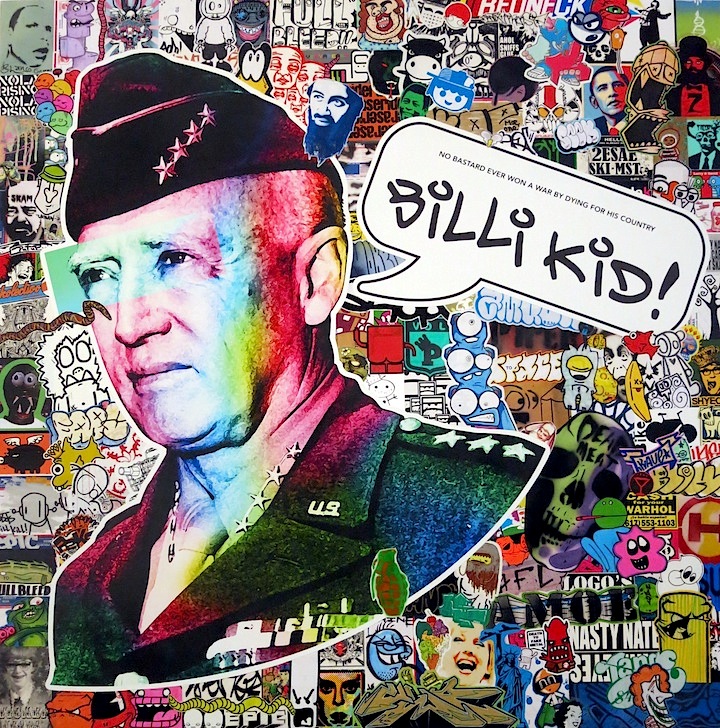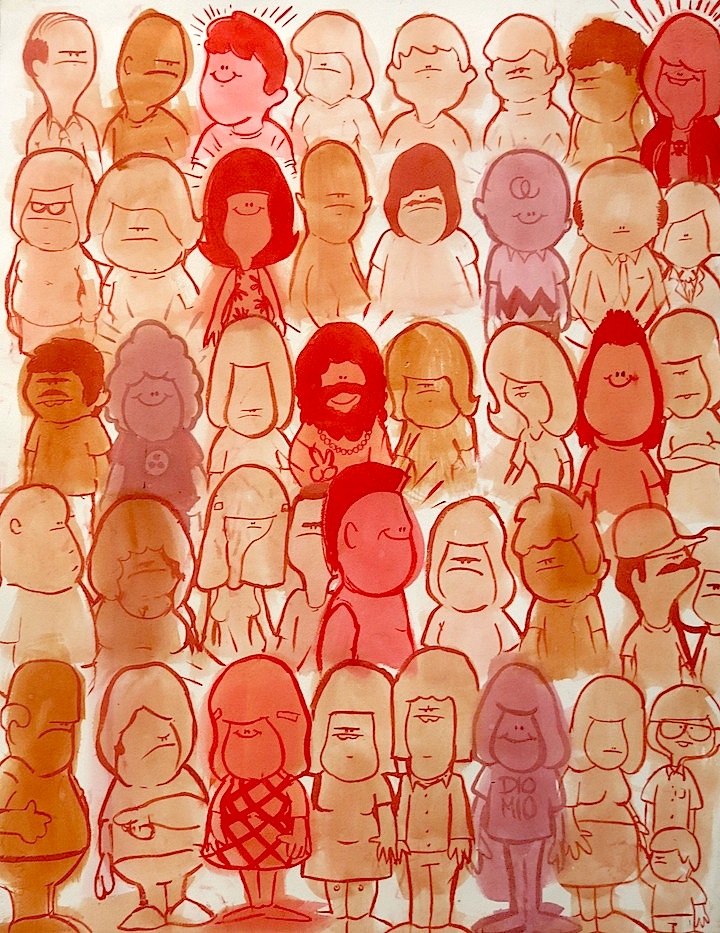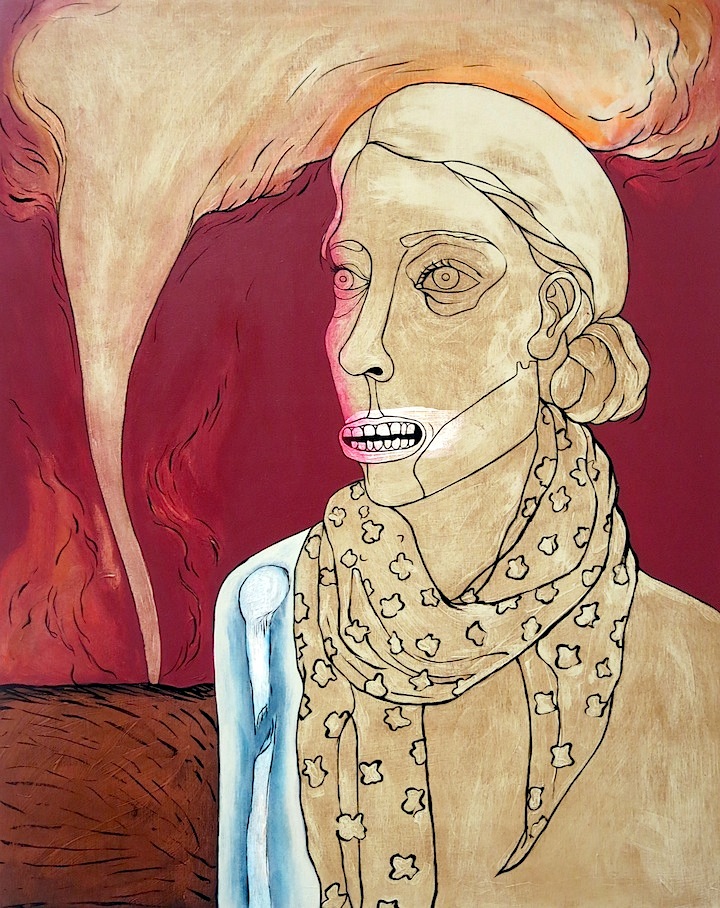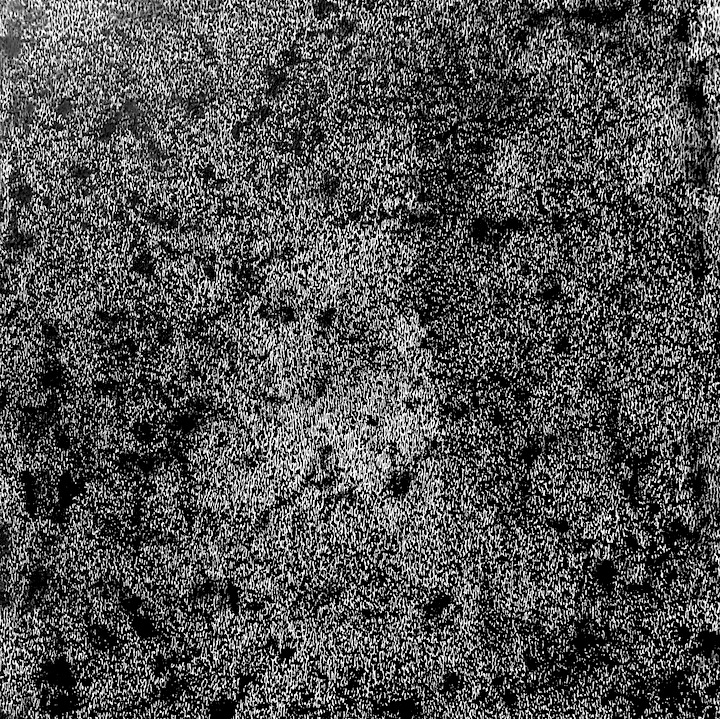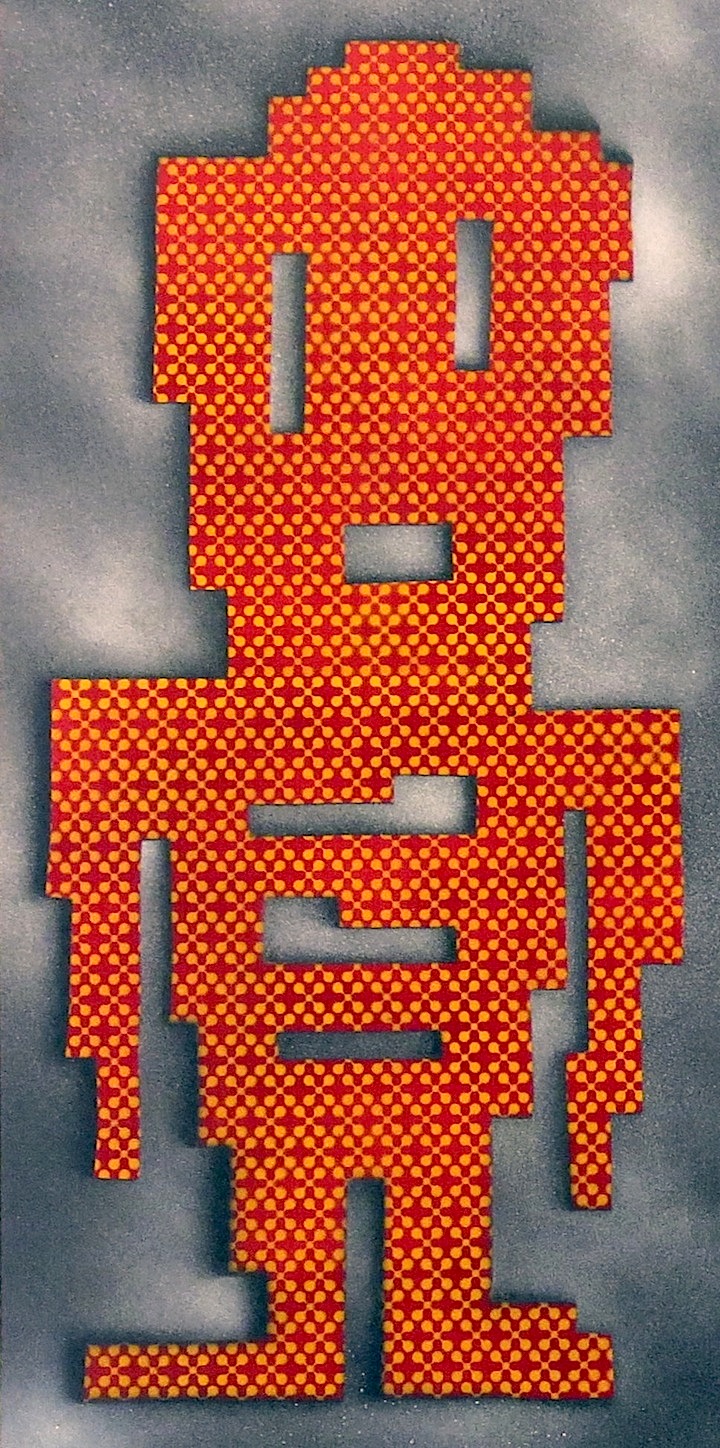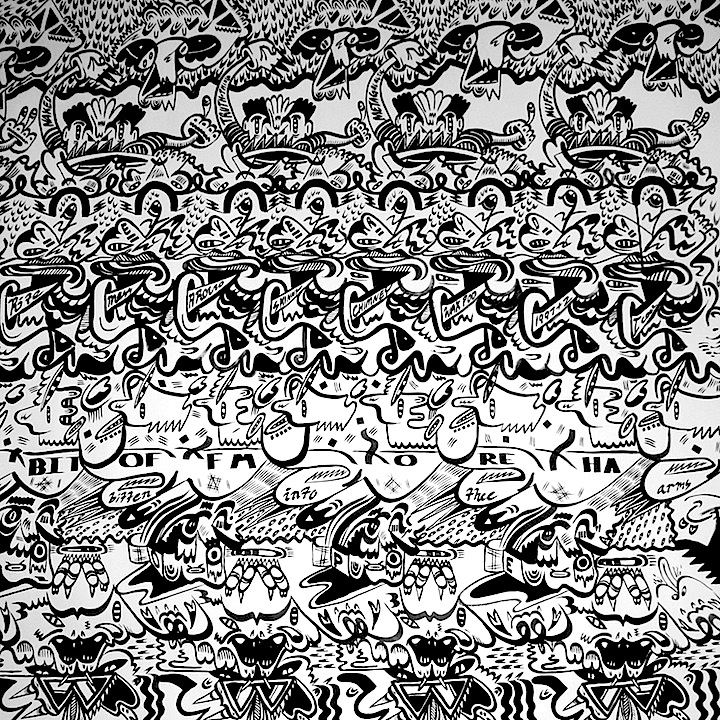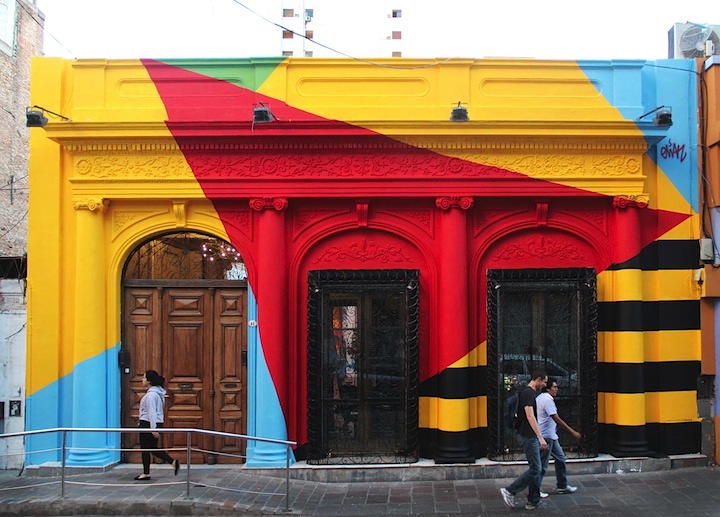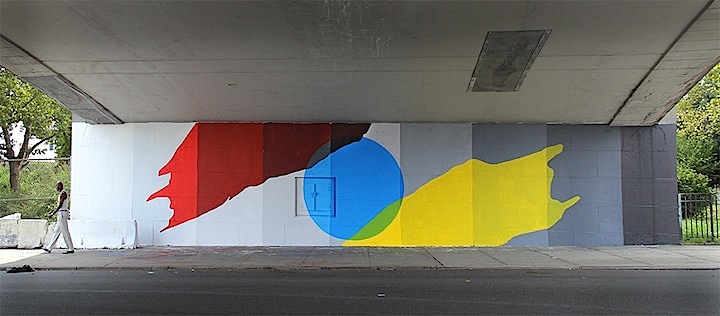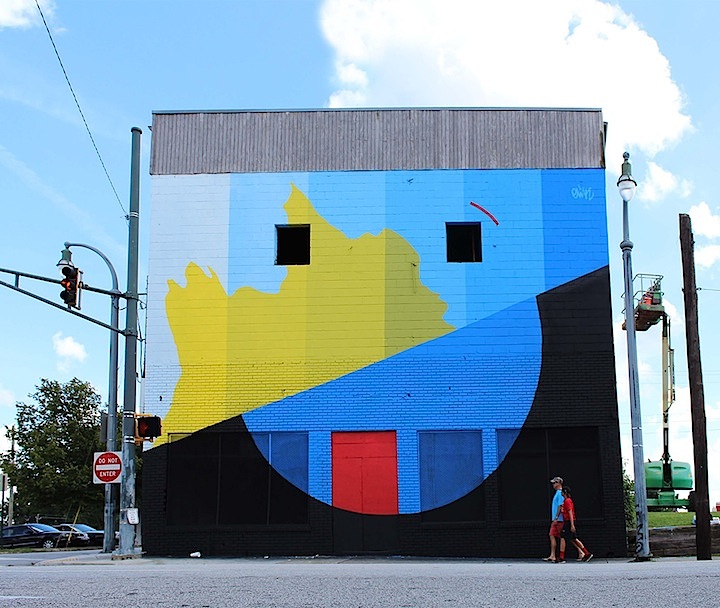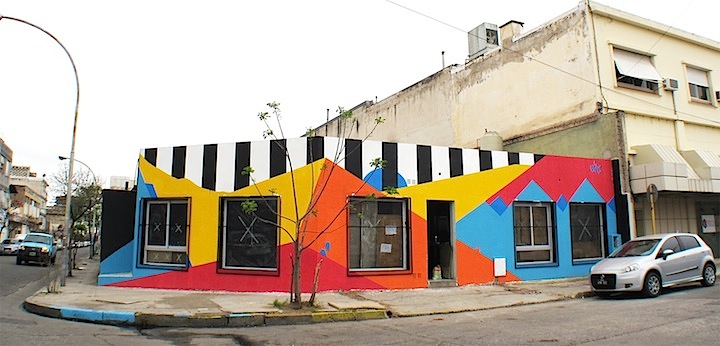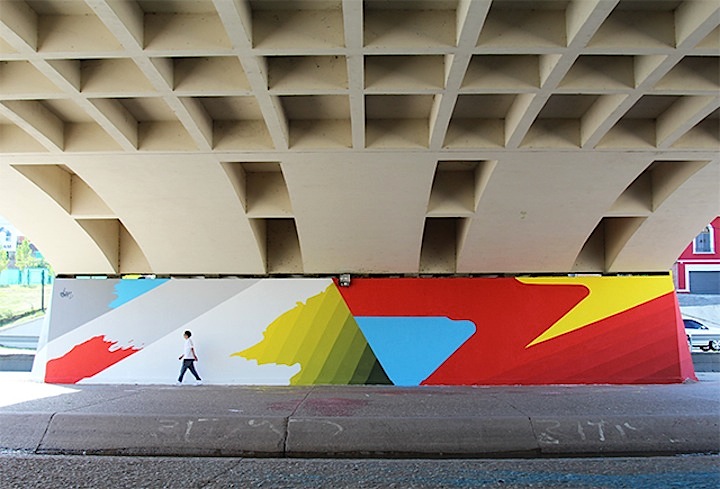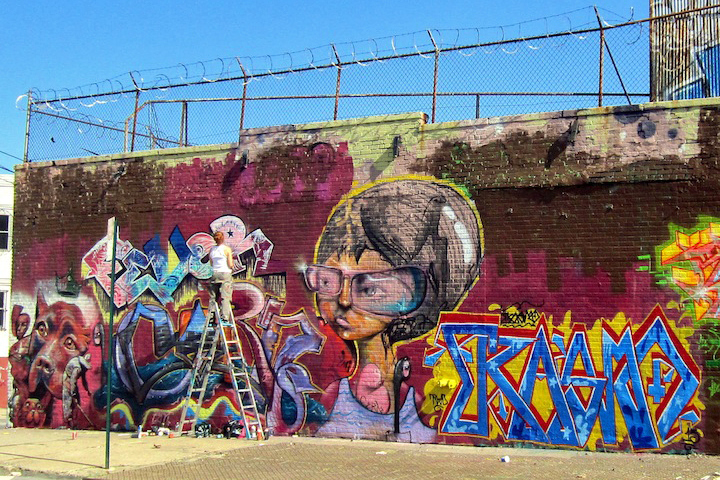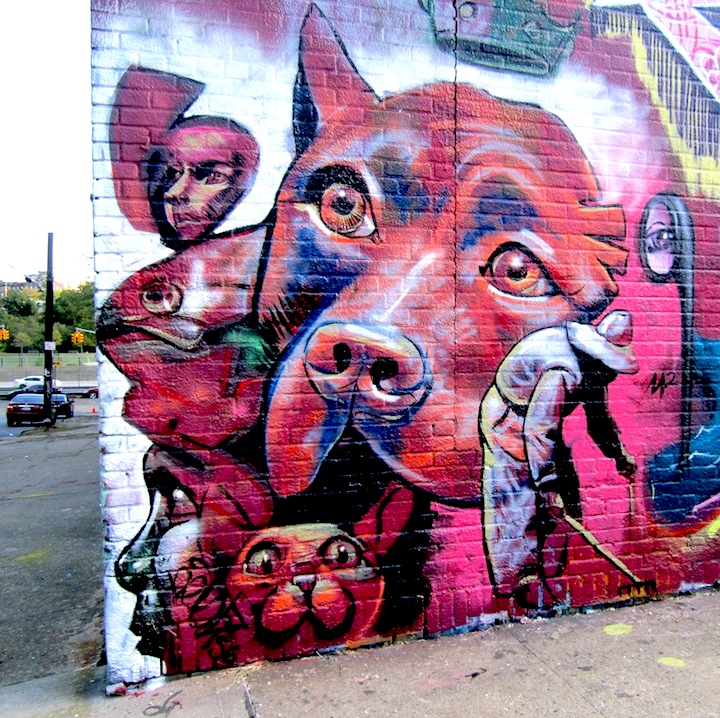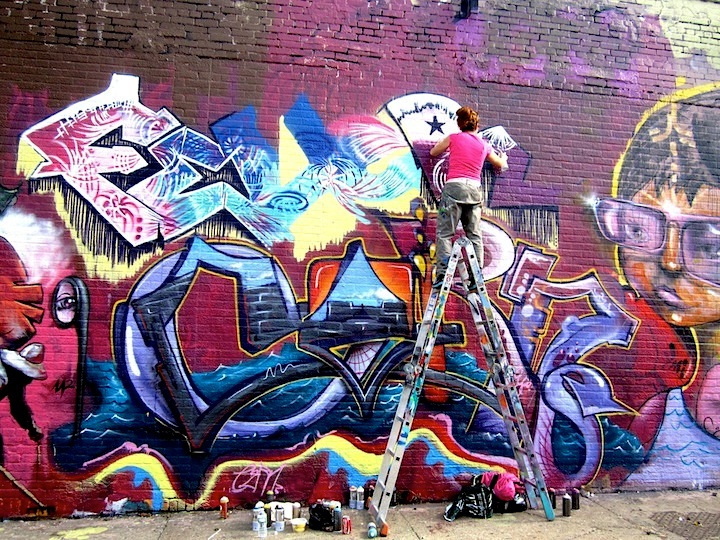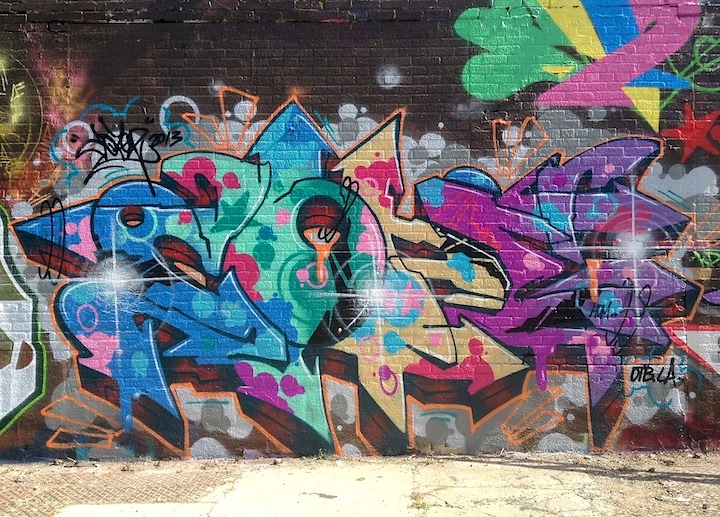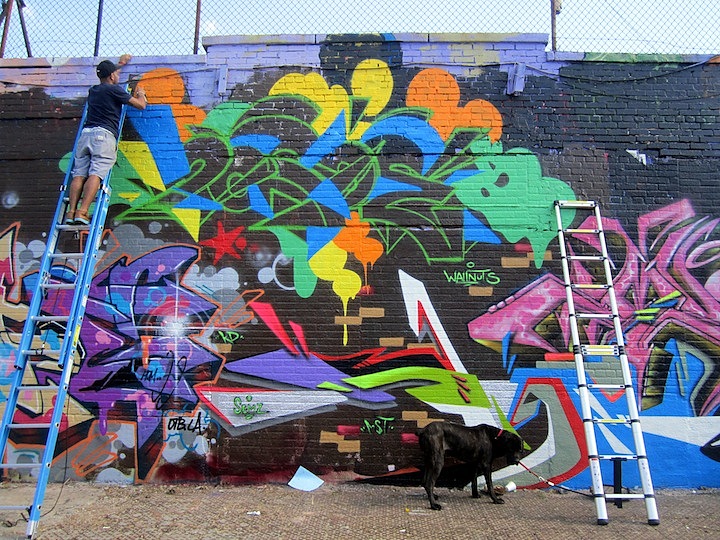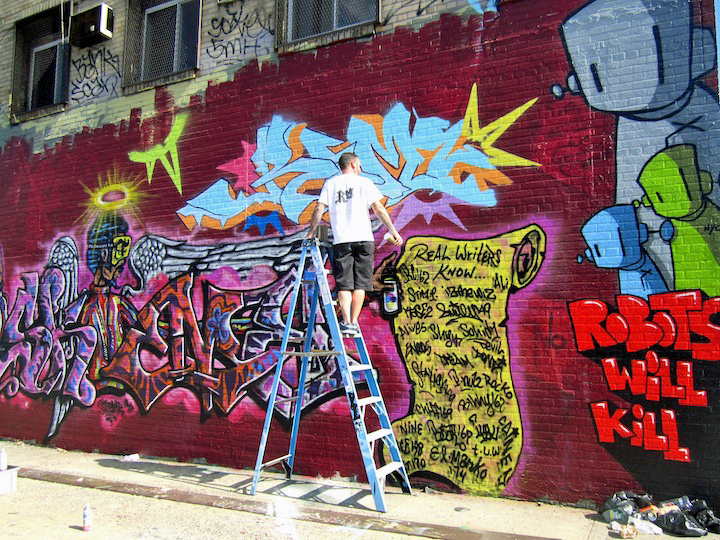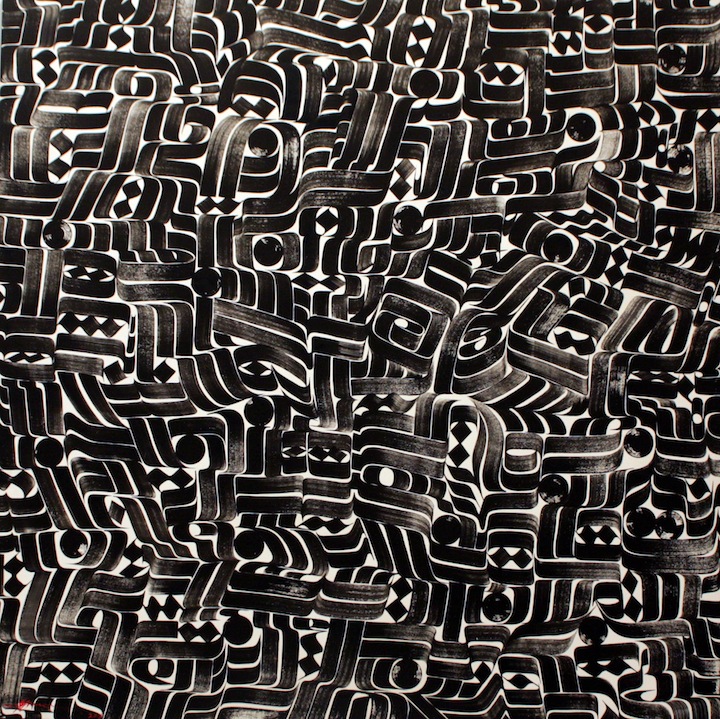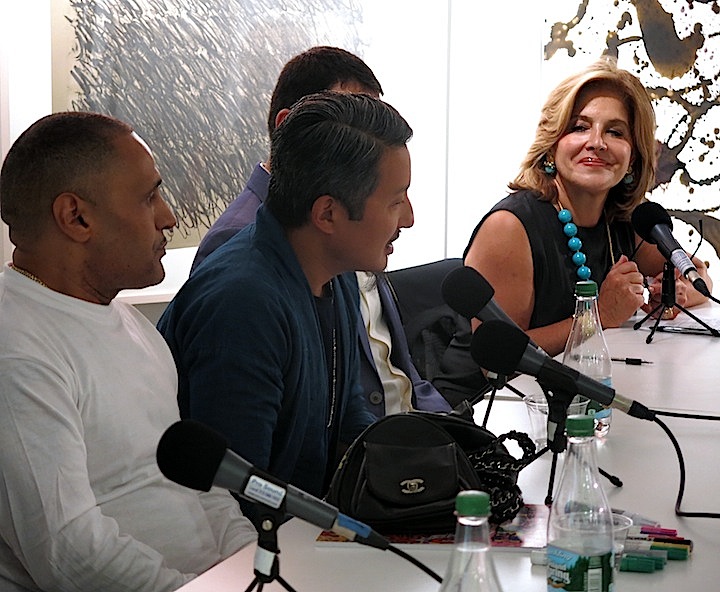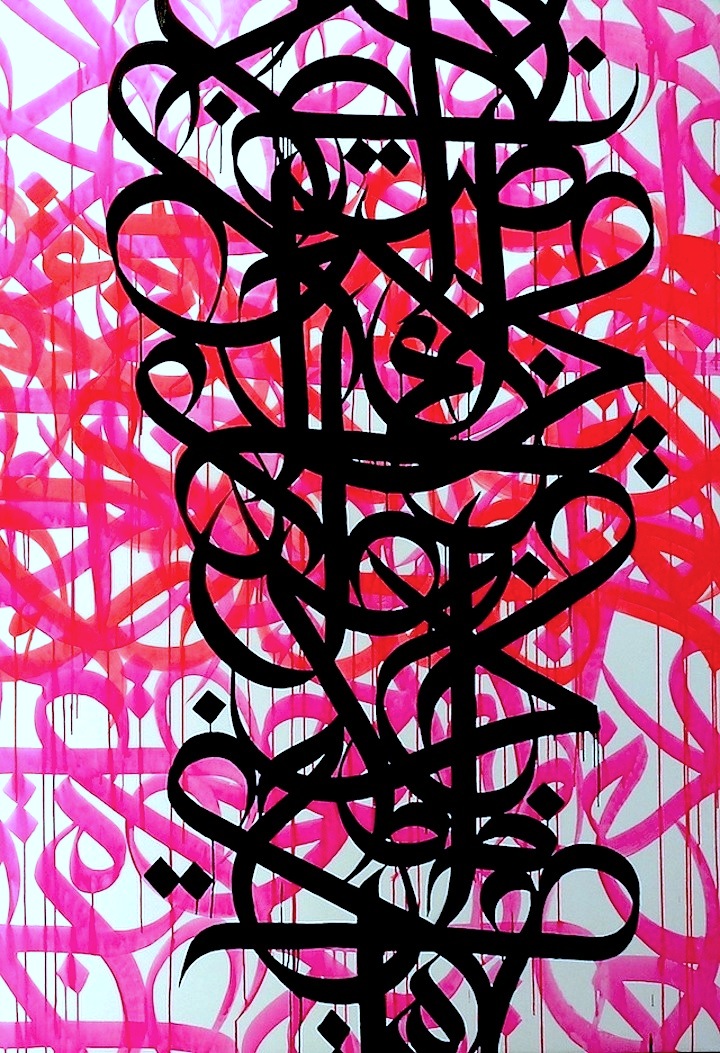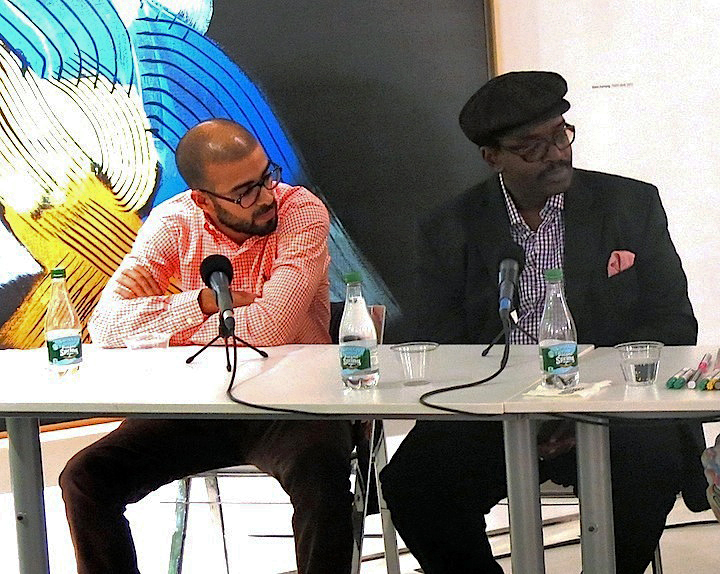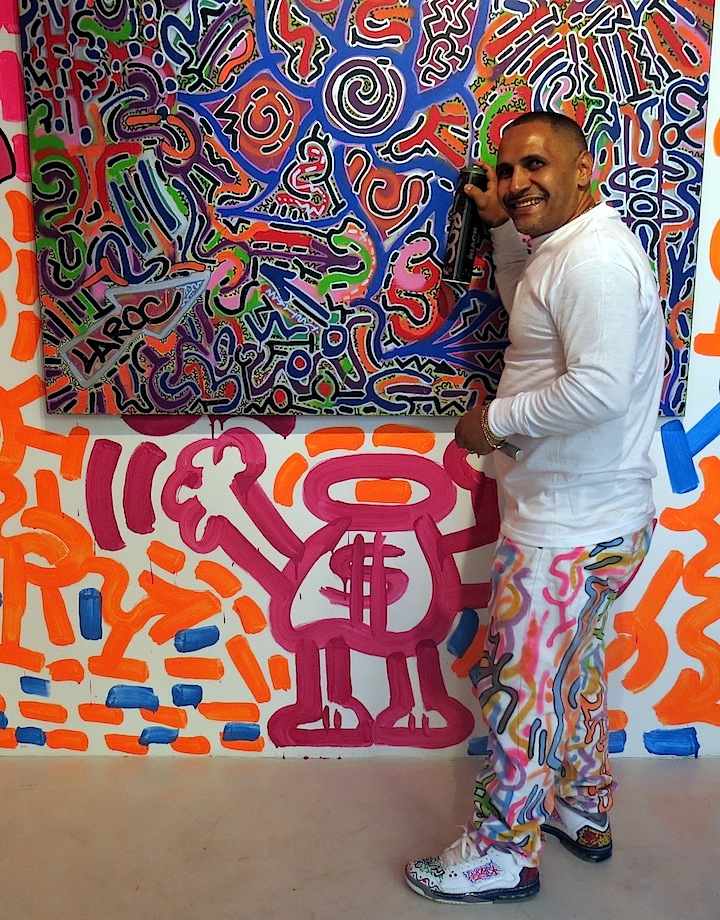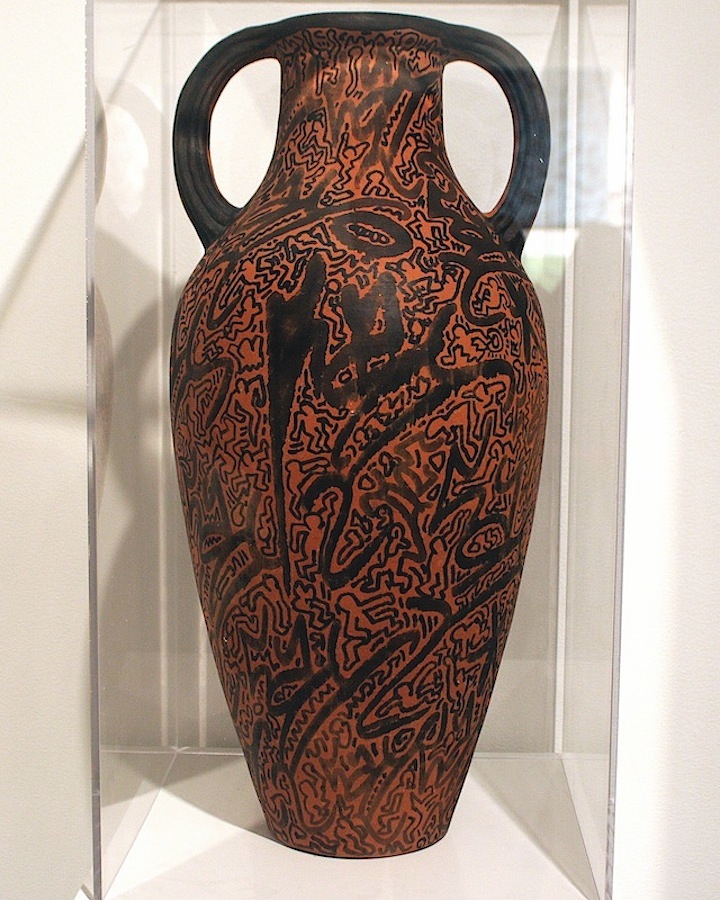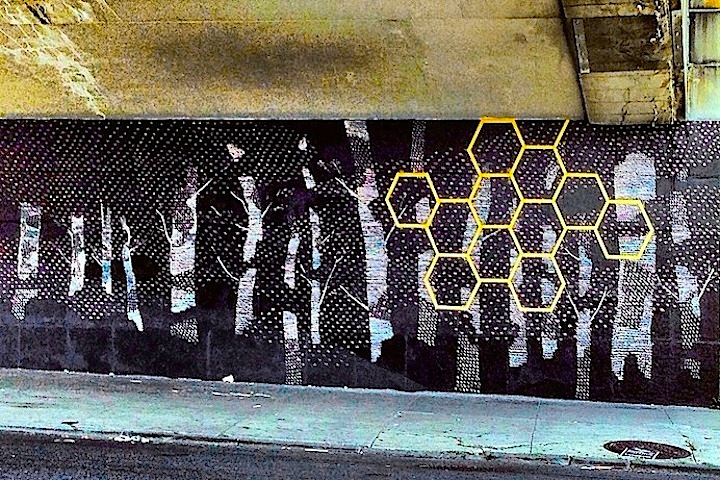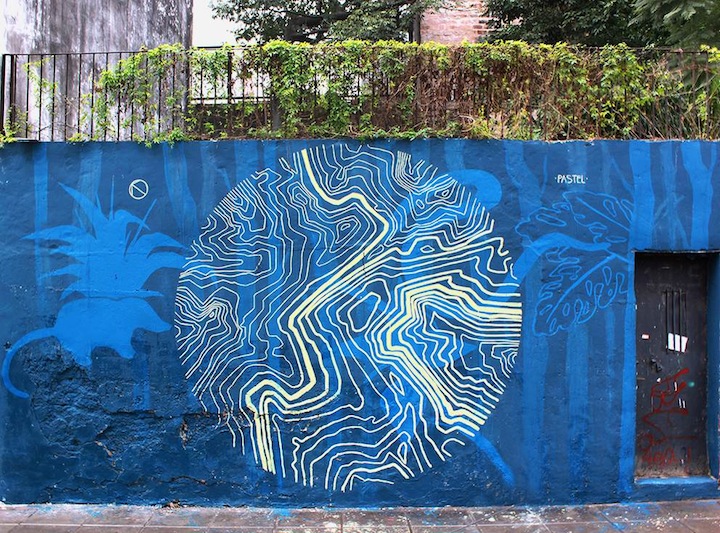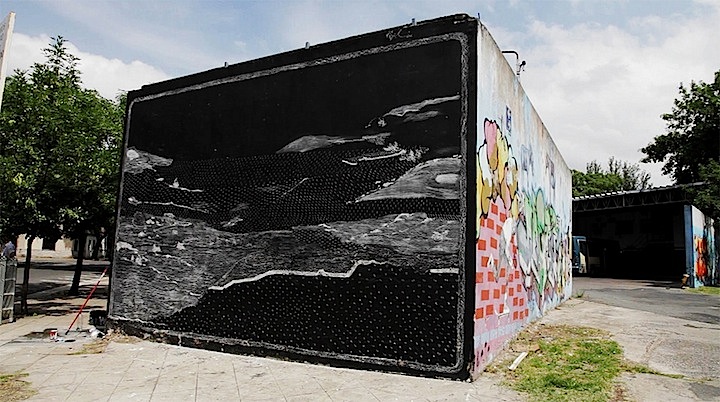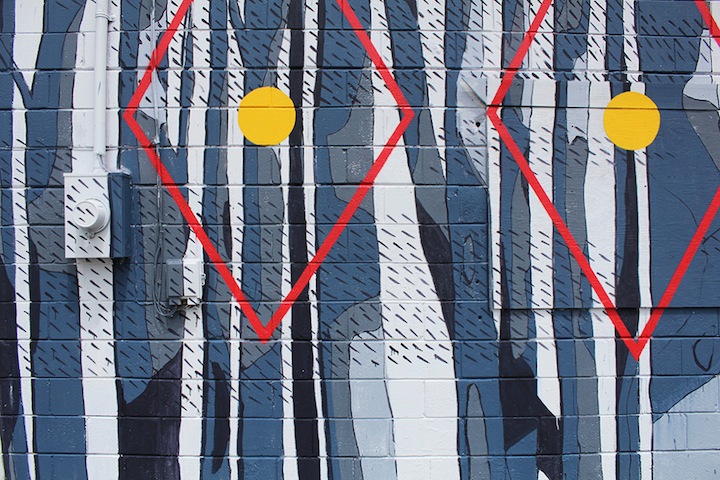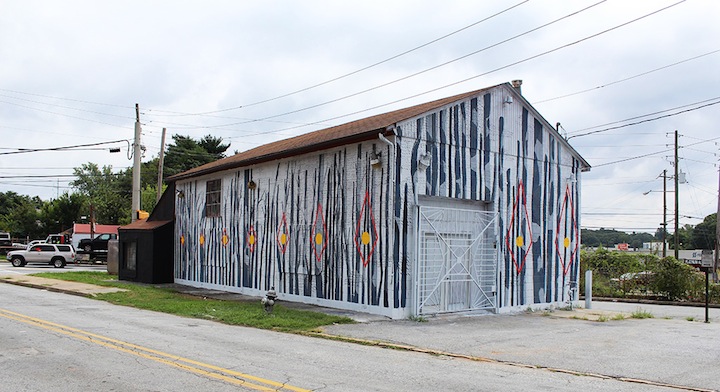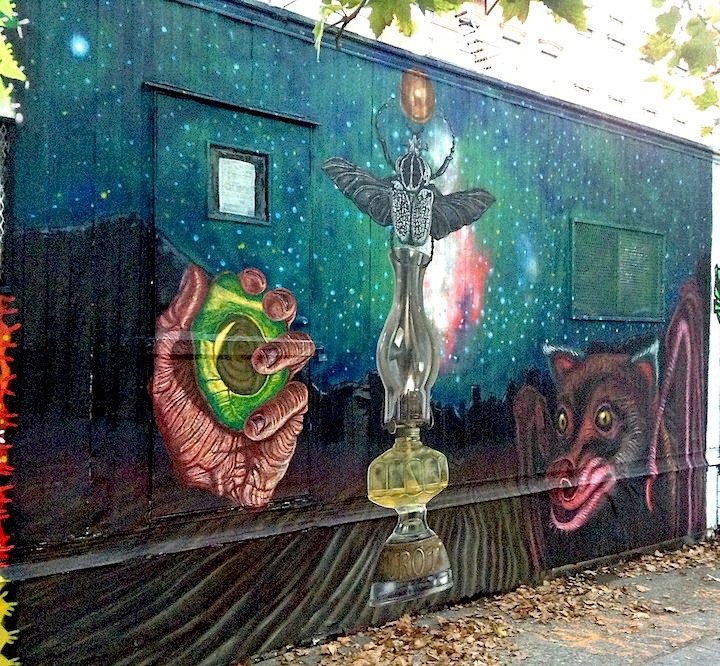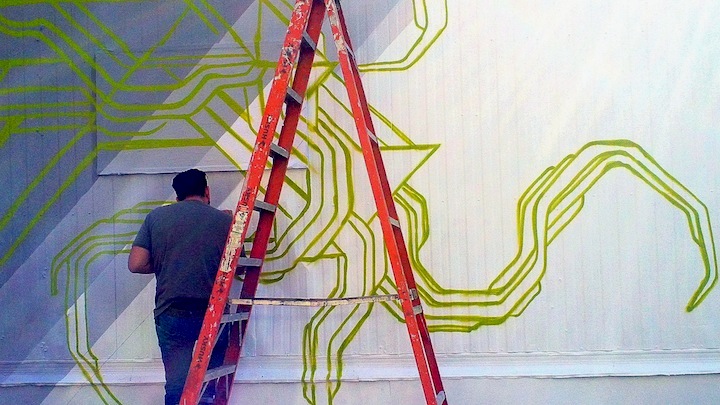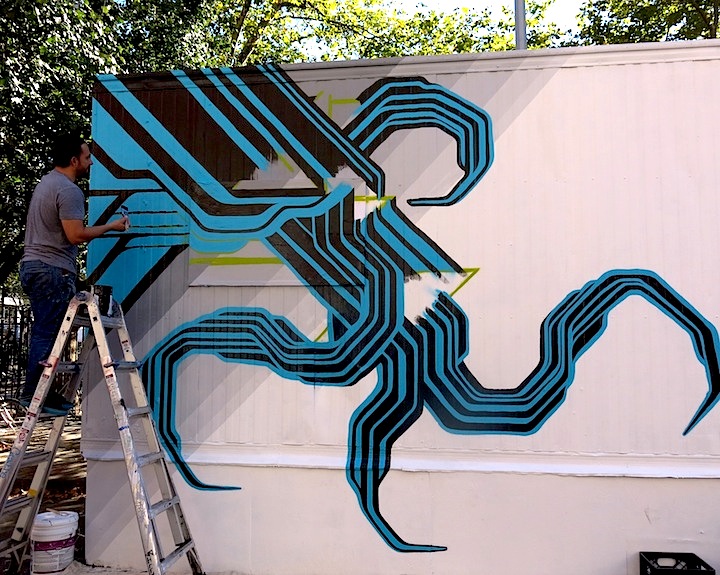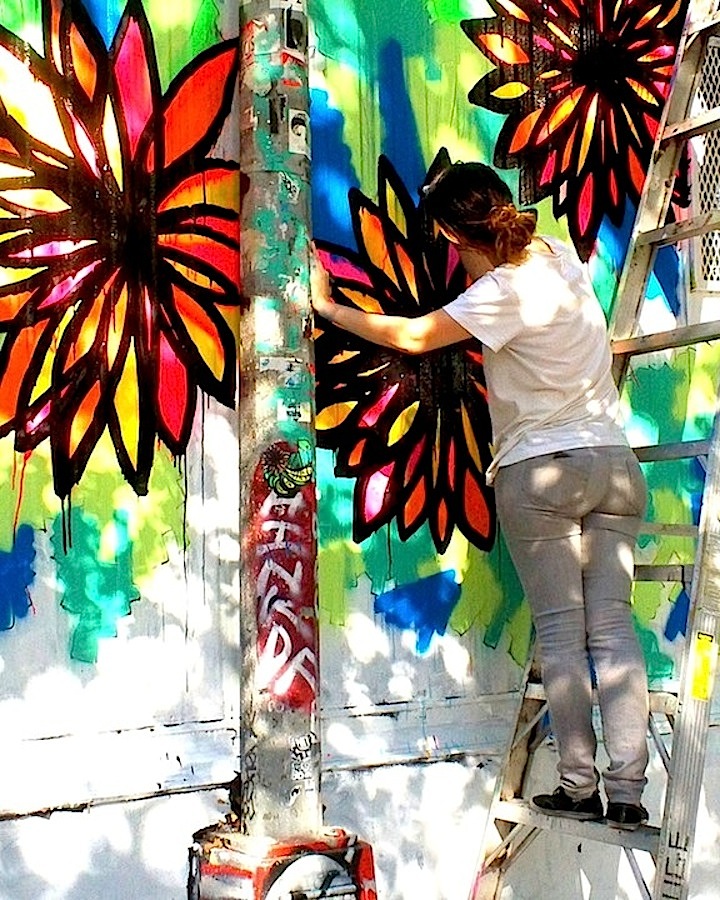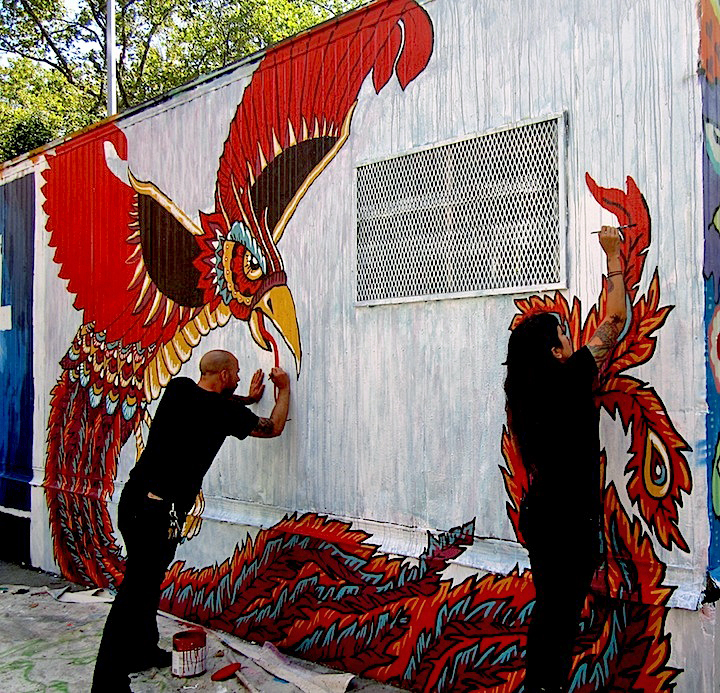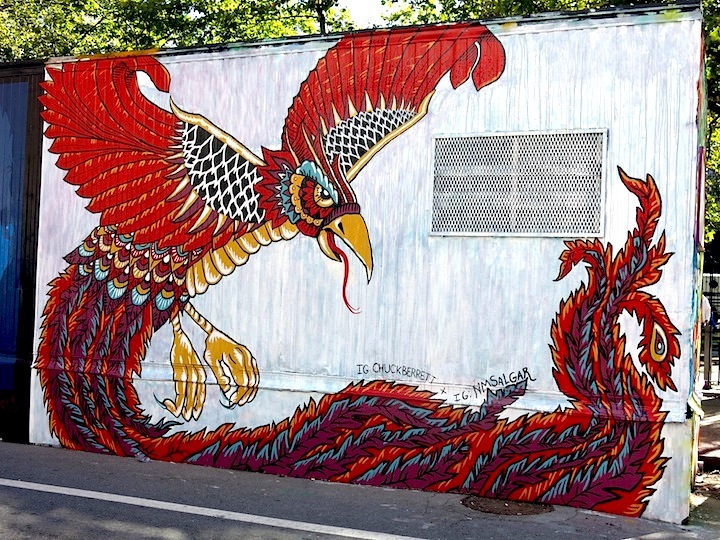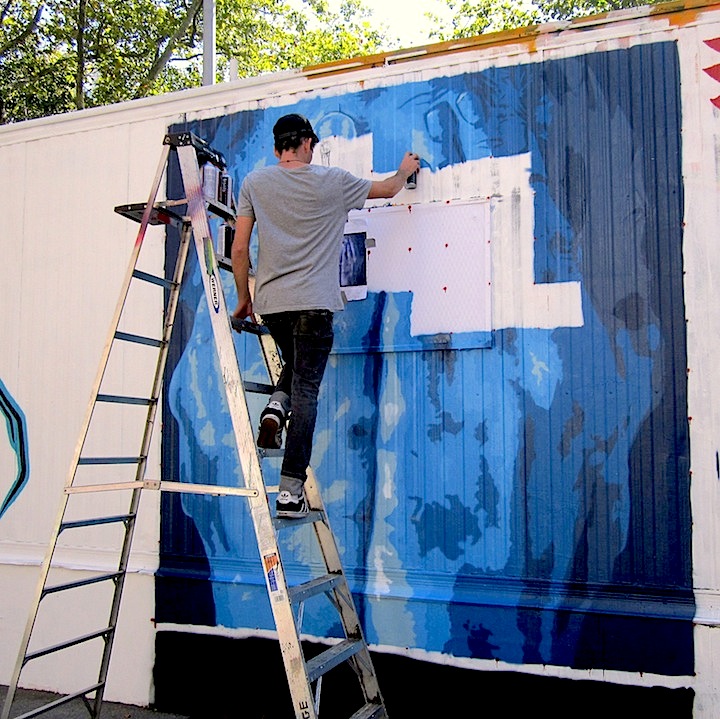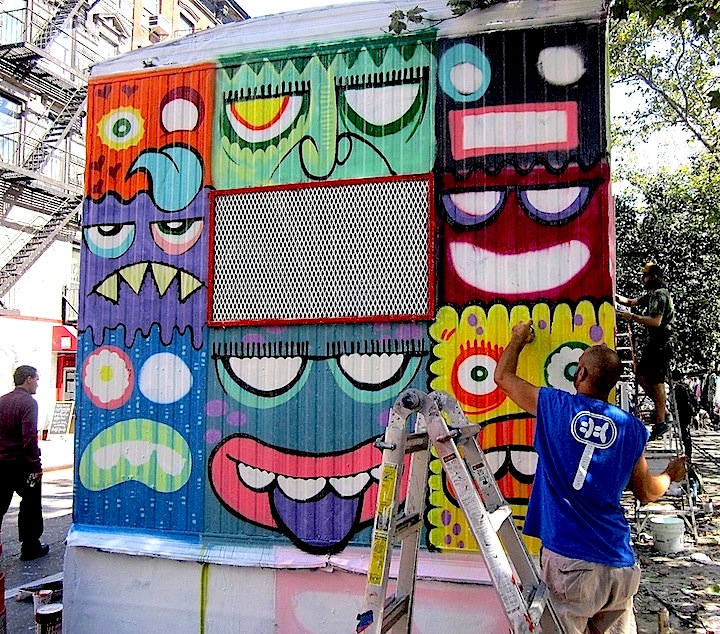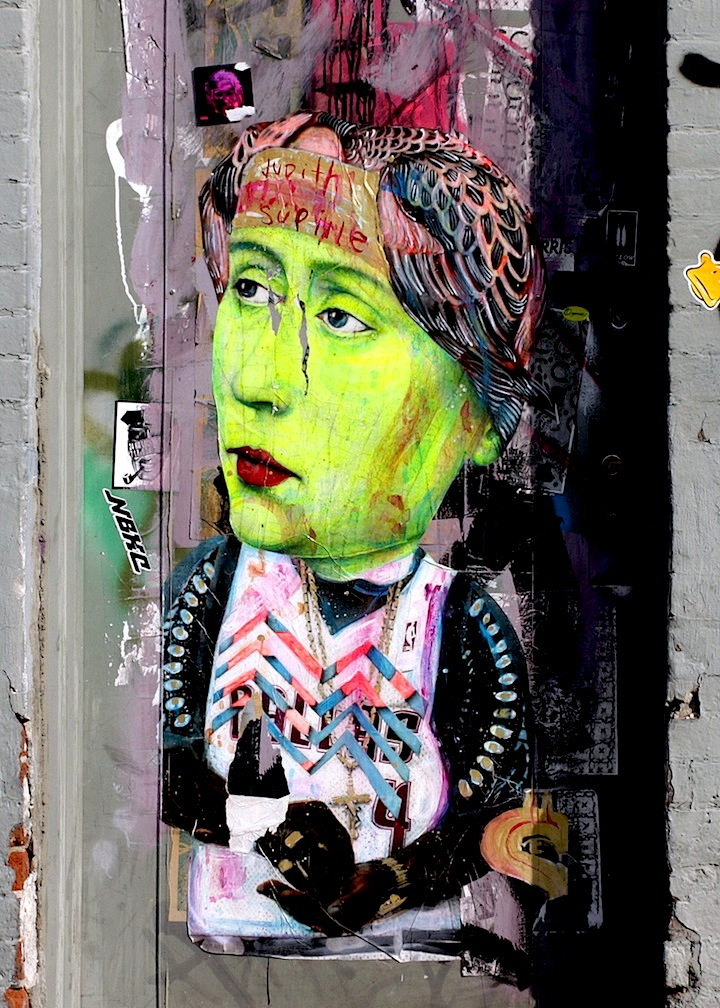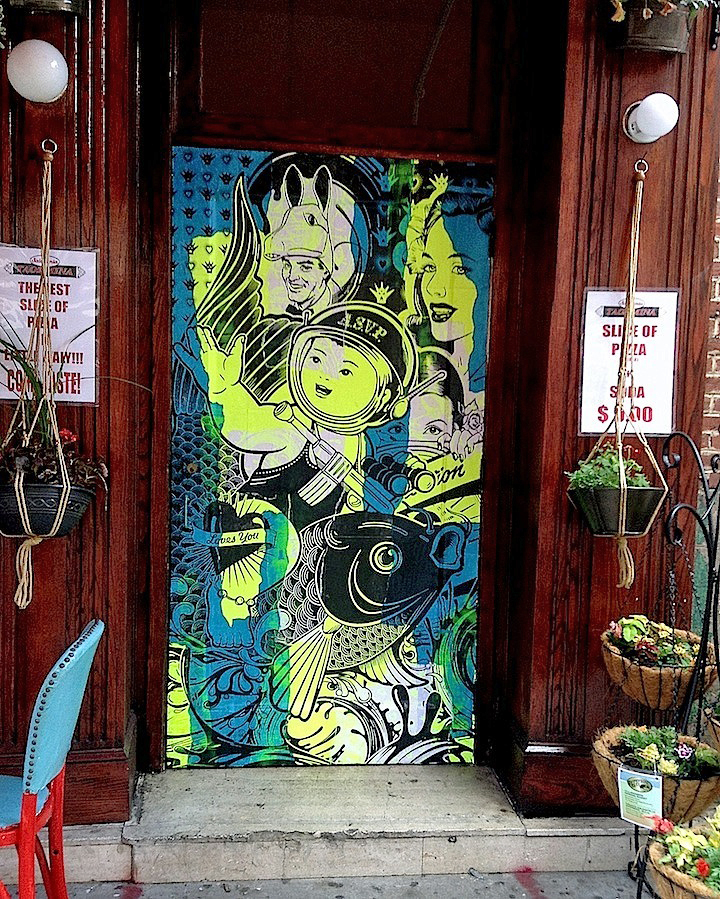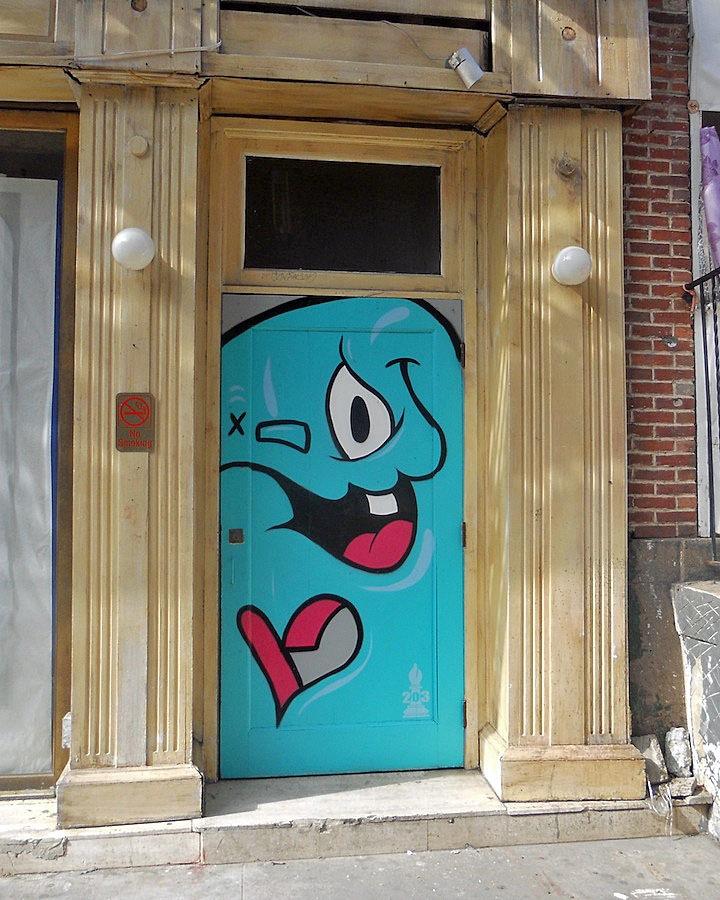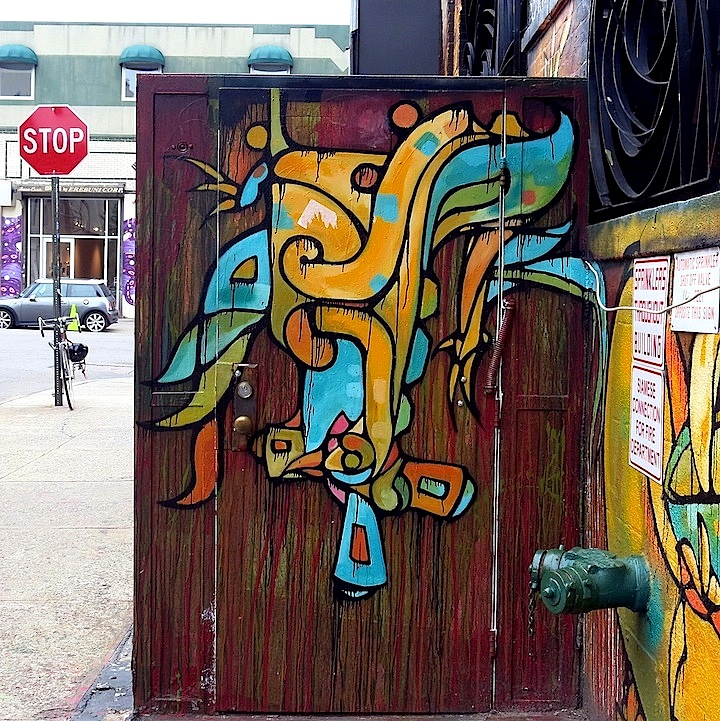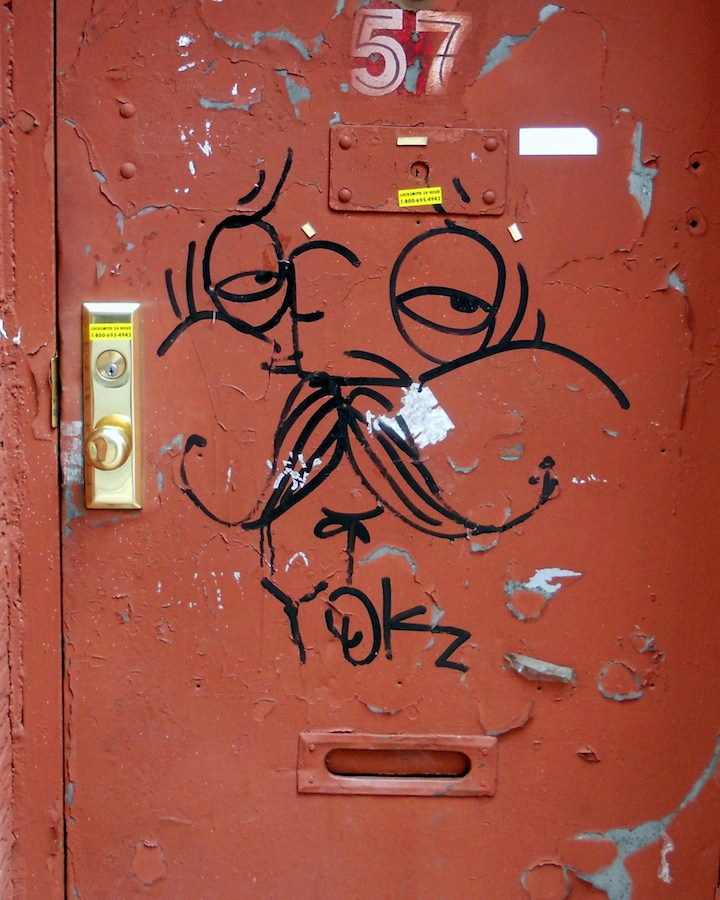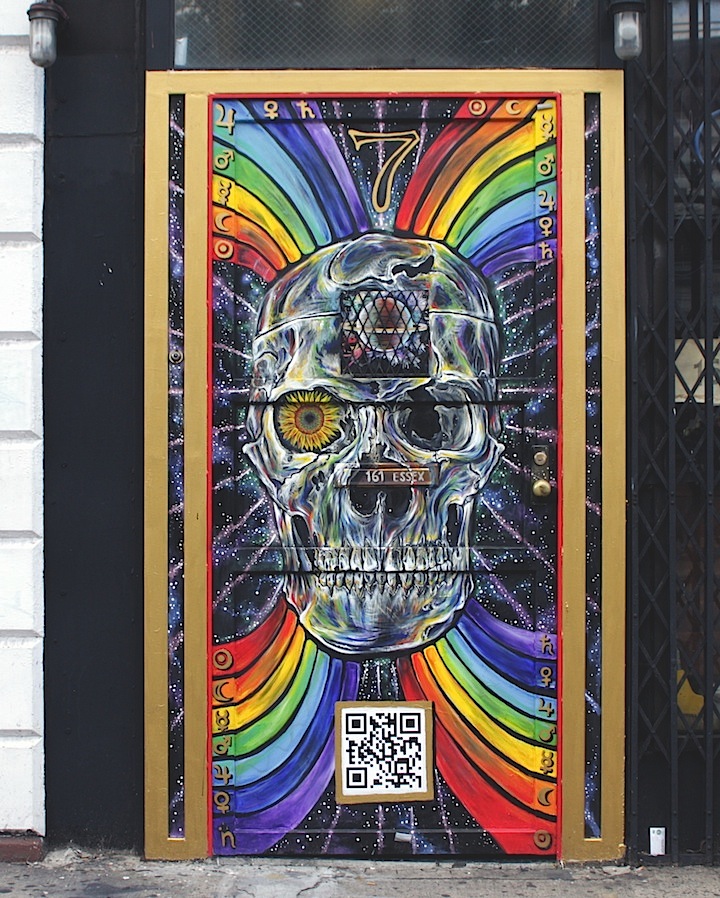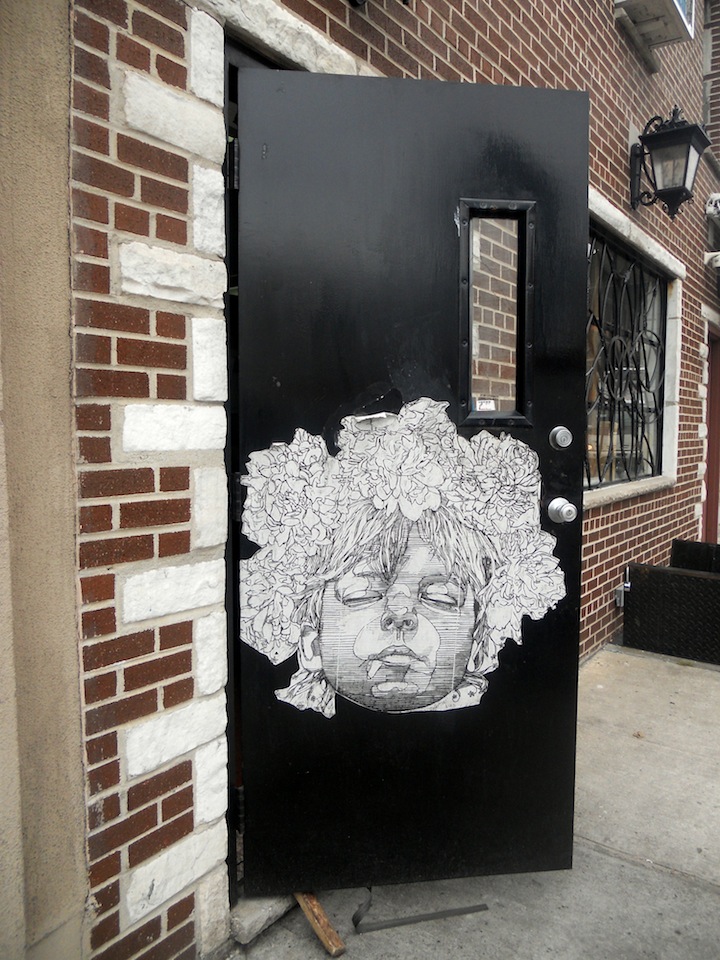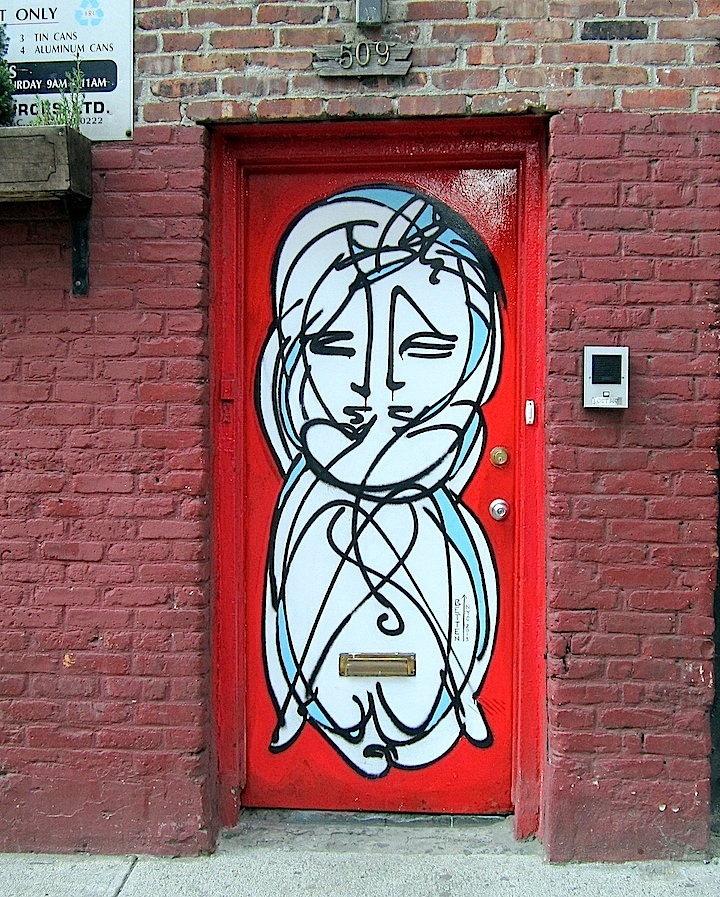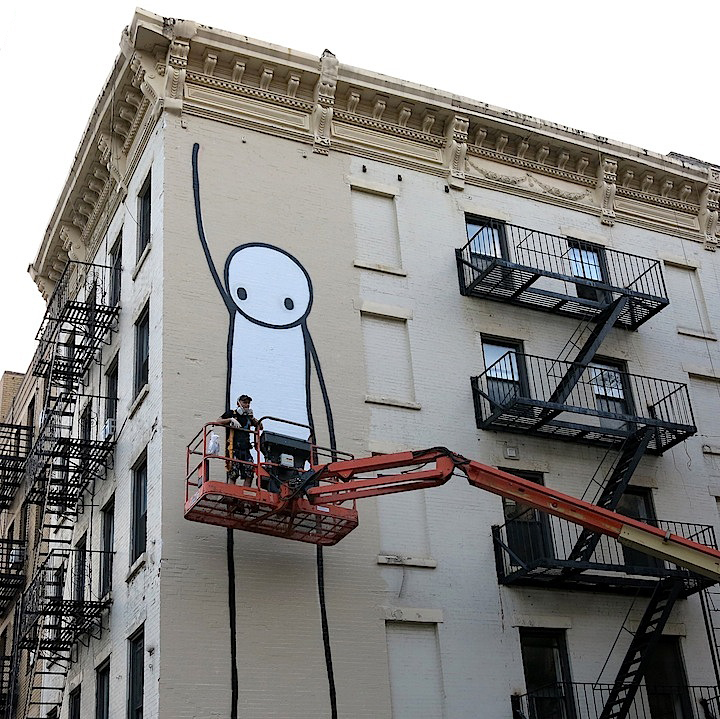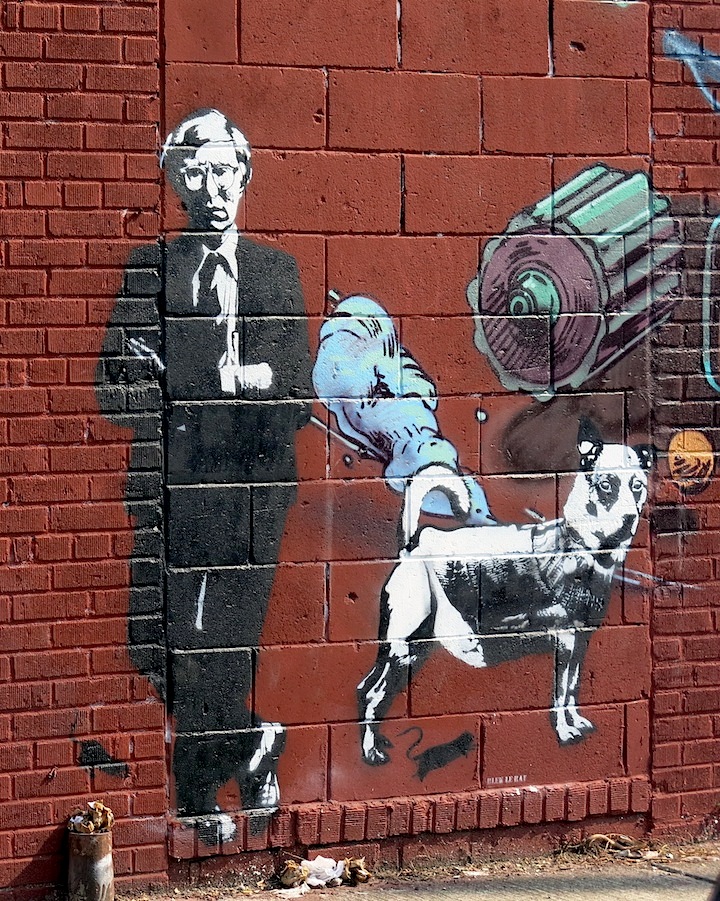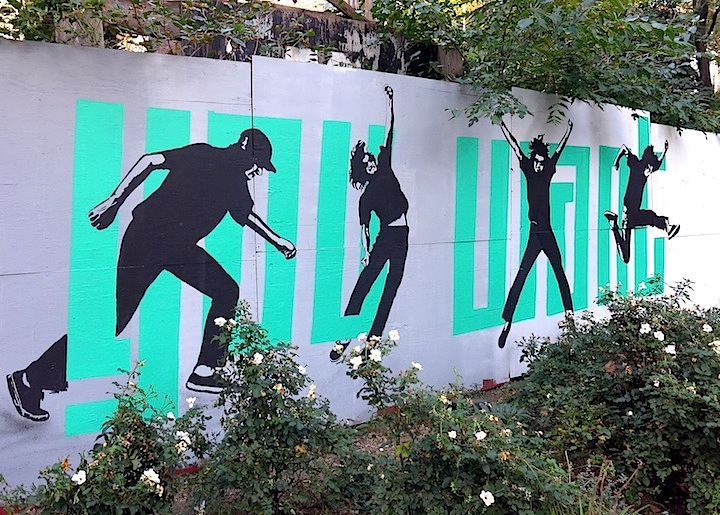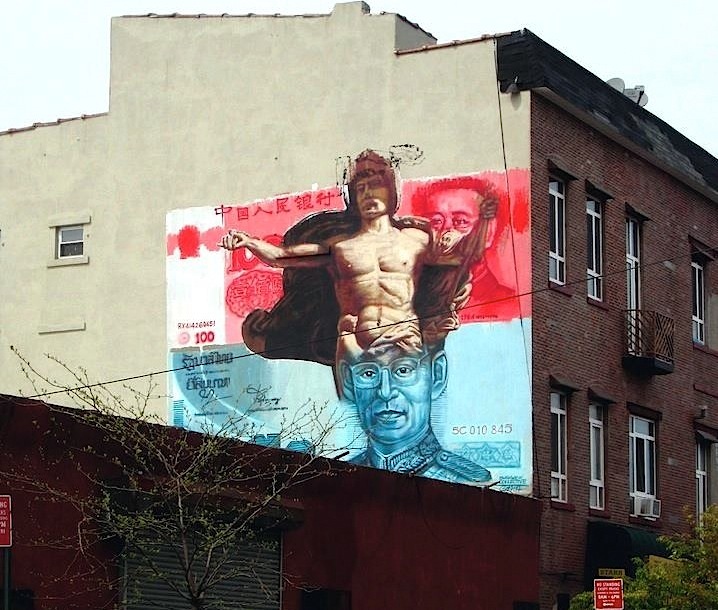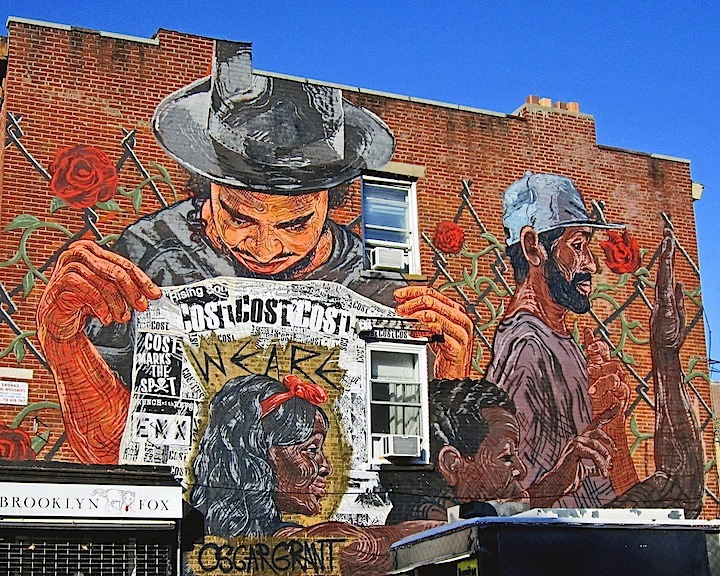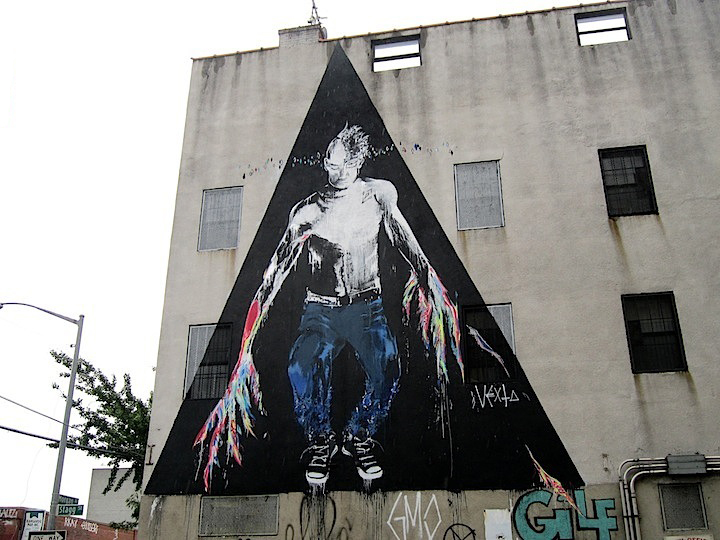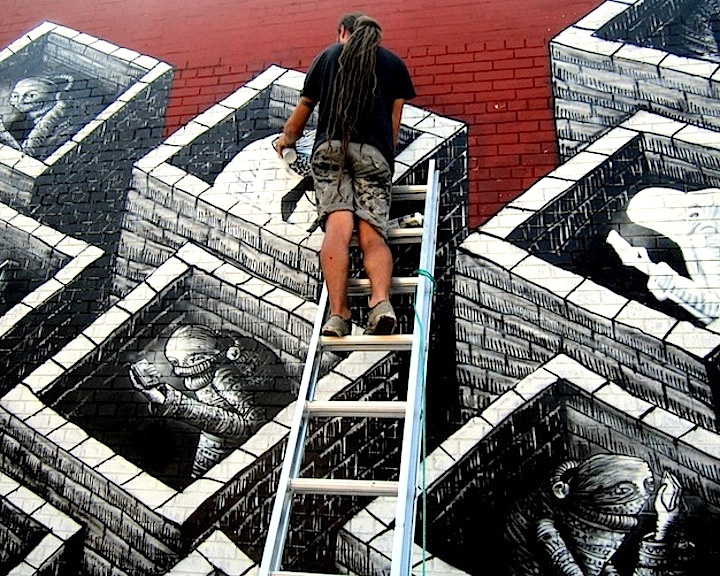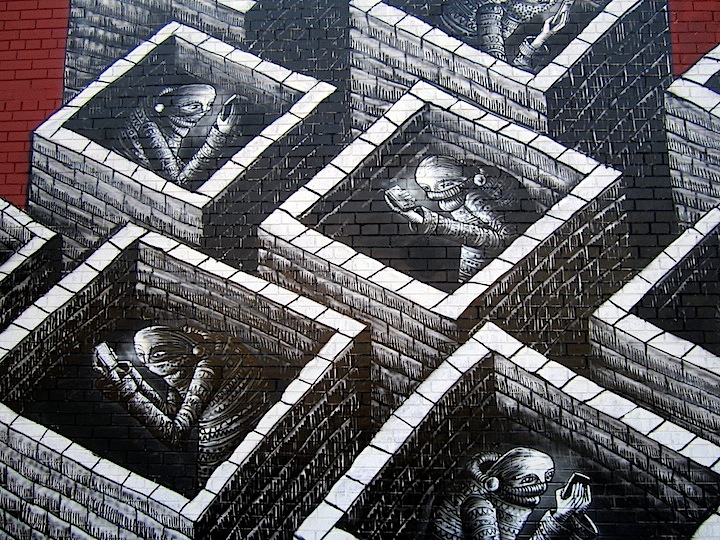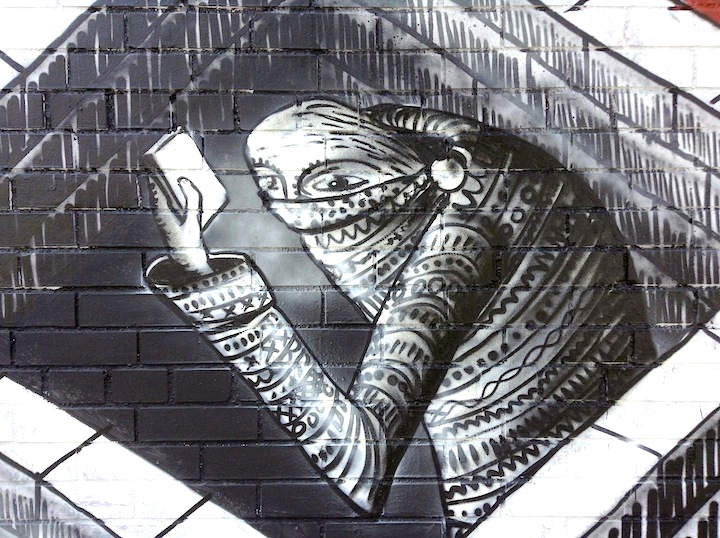Prolific on the streets of his native Tel-Aviv, Dede aka Dede Bandaid has spent the last two weeks leaving his mark here in NYC — in Brooklyn, in downtown Manhattan and at 5Pointz in Long Island City, Queens.
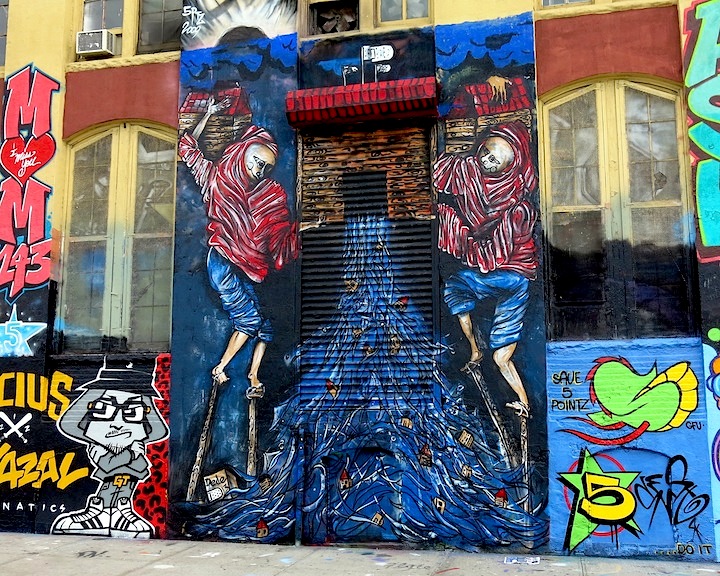
When did you first get up?
When I was 13, I found a spray can as I was wandering around my neighborhood. I’d always been drawing on just about every surface, but I’d never used a spray can. I was curious. And so I went to my schoolyard to try it out!
What was that like?
It was amazing. I looked up to the sky, and I began to paint a galaxy with stars and more. But it was years before I got up again in any public space. The walls in my house and in my friends’ houses became my canvases.
And when did that change? When did you first hit the walls of Tel Aviv?
It changed when I was in the army. Army service in my country is compulsory, and I hated it. And so during one of my vacations from the army, I sprayed a pro-peace stencil on a public space. That was around 2000.
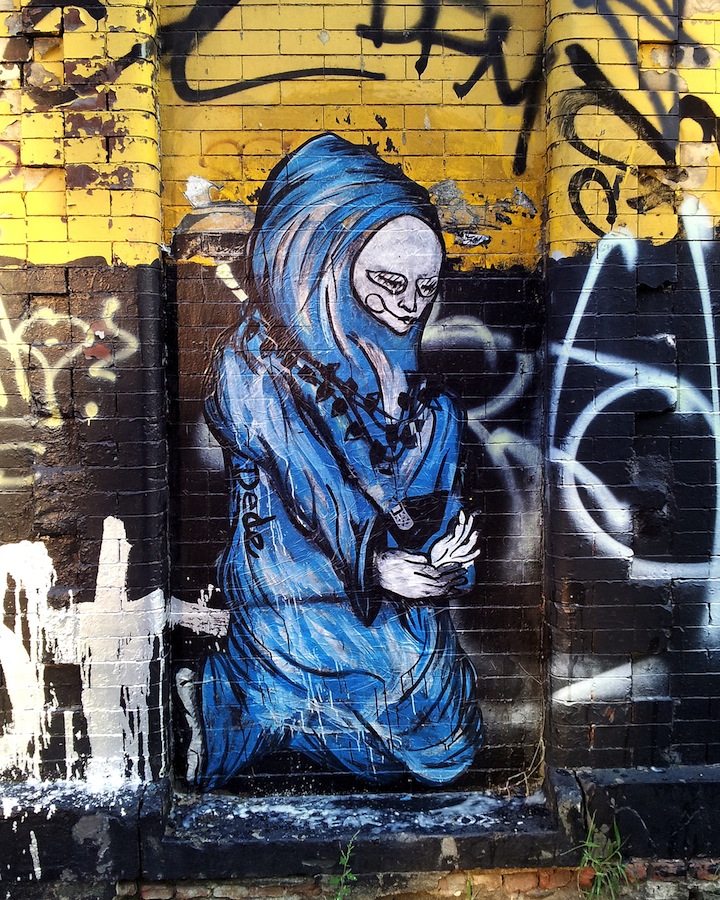
Do you paint alone? Or do you get up with any crews?
I’m almost always on my own. On occasion I’ve collaborated with Latzi. I feel that I’m more influenced by Israeli culture, politics and aesthetics than many of the other writers here. I’m, also, not involved in “the scene.” I’m more intent in getting a message across and – at this point – developing my own distinct style.
What other aspects of Israeli culture – besides its fraught politics — have influenced your aesthetic?
I infuse iconic Israeli symbols into my artworks– such as the white pigeon for peace and various plants that have Biblical references. But my main inspiration comes from everyday Israeli life – all the discussions that Israelis engage in daily regarding the army, the government, the economy…
Do you prefer to work legally or illegally?
I definitely prefer working in unauthorized spaces. That’s what street art is about. I can do whatever I want, without having to show sketches to anybody. The beauty of getting up on the streets is the freedom it gives you. And there’s the adrenaline rush – that only comes with working illegally.
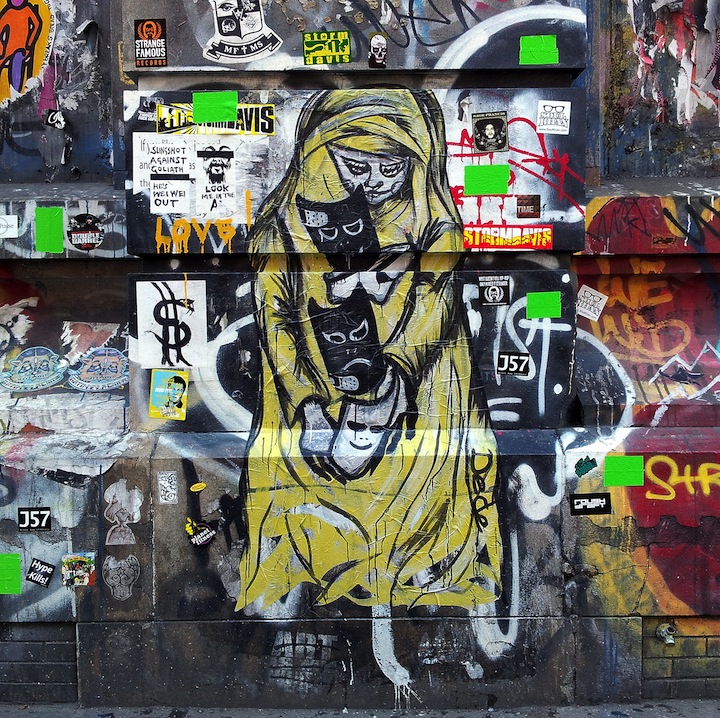
Tell us something about the band aid. You sign your work Dede with an image of a band aid alongside it. How did that come about?
About five years ago, I was seeking a way to express and heal my wounds. The band aid then became a symbol for all kinds of difficulties – personal and societal — seeking remedies.
And what about the houses? I’ve been noticing lots of houses – in different shapes and positions – in your work. What do these houses represent?
When I first started including houses in my works, they represented the notion of “home” – and not feeling at home anywhere. But then they came to represent so much more – a search for home, the high cost of housing, the political situation…
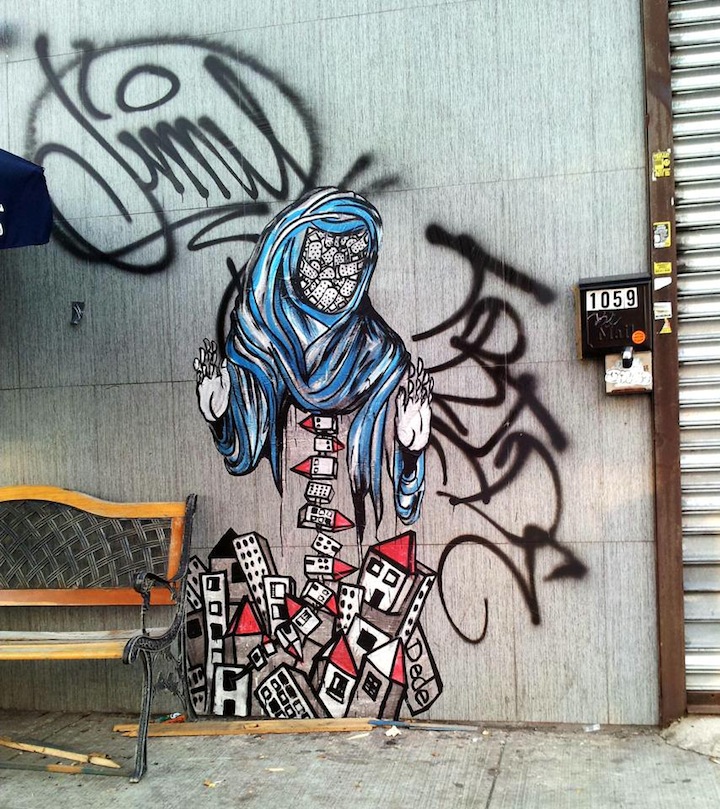
Have you exhibited your art in gallery spaces?
Yes. Back in Israel, I’ve exhibited in Tel Aviv and in Jerusalem. I’ve also exhibited my stencil work in Berlin. And here in NYC at New York University’s Bronfman Center.
Any thoughts about the movement of street art into galleries?
Well, when it’s in a gallery, it’s no longer street art. And when my work is in a gallery, it is judged more harshly than anything I do on the streets.
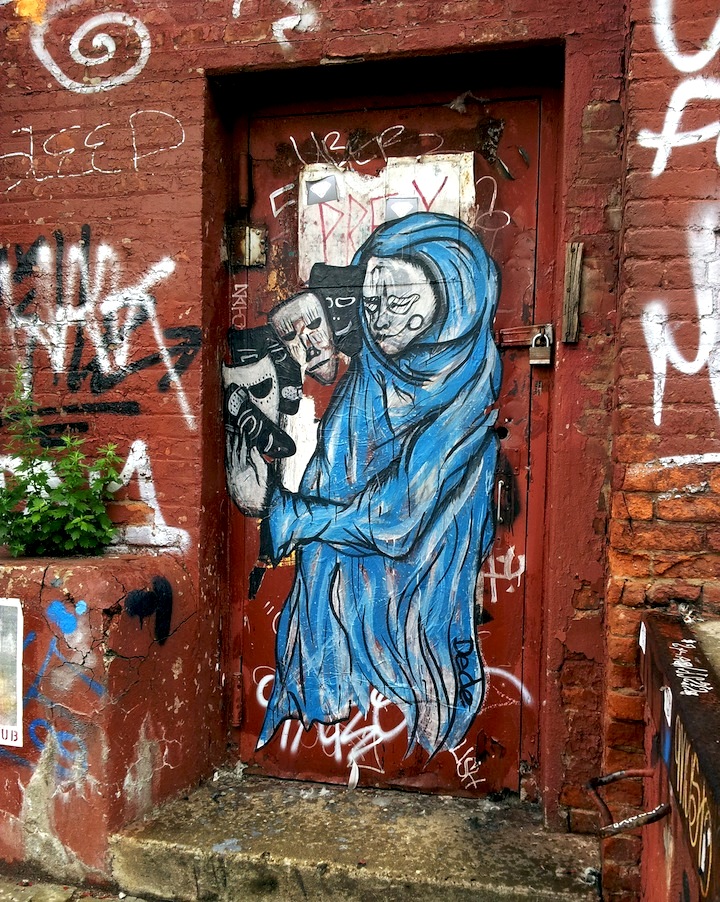
What percentage of your time is devoted to art?
All of it. I’m either painting or sleeping.
Is art, then, the main source of your income?
Yes. I sell paintings and I do commissions.
How does your family feel about what you do?
They love it. My mom loves seeing my work in the streets, and she always photographs it.
What is the riskiest thing you did and why were you willing to take that risk?
I’ve taken lots of risks. But the riskiest was probably navigating a lengthy, unruly river in the rain to install a yellow submarine.
Was it worth it?
Definitely!

Any thoughts about the graffiti/street art divide?
I don’t feel it in Israel.
Have you a formal art education?
Yes. I graduated from Bezalel in 2009. I learned a lot, and it was lots of fun. But I’ve learned far more from the streets.
Do you work from a sketch or do you just let it flow?
I usually just let it flow.
Are you generally satisfied with your finished piece?
Never.
Your work seems quite different from when I first saw it on the streets of Tel Aviv a number of years ago. How has it evolved through the years? And why has it changed so radically?
I began by stenciling and found myself too easily influenced by other stencil artists. And when I began to make my stencils more detailed, I developed an infection from cutting them. And so I began painting more free hand. And now it’s evolving into a fusion of painting and collage. I am working more and more on developing my own voice.
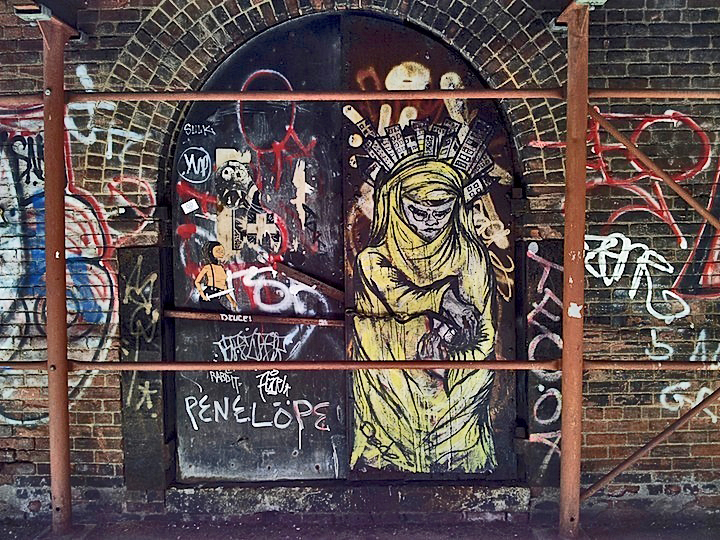
How do you feel about the role of Internet in all this?
It’s definitely more positive than negative. It seems that most people first discover street art on the Internet. And online I get to see work from lots of artists I haven’t met. But the Internet can also strip you somewhat of the ability to develop a distinct, personal style.
What about the role of the photographer?
The photographer’s role is very vital to the movement. Many artists either don’t document their work or document it poorly. And since the Internet does have so much power these days, the photographer’s role is increasingly important.
What’s ahead?
Evolution and advancement.
Photo at 5Pointz by Dani Mozeson; all others courtesy of the artist
